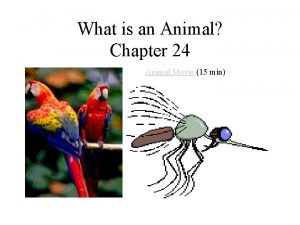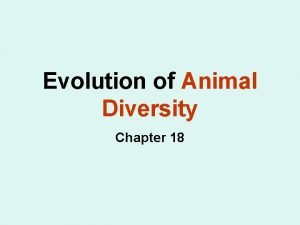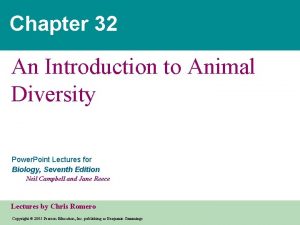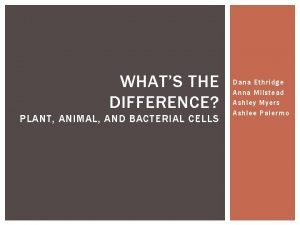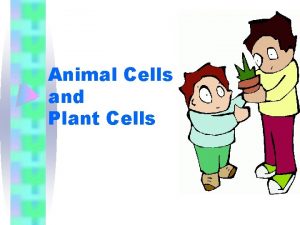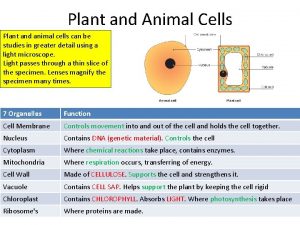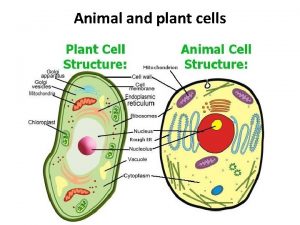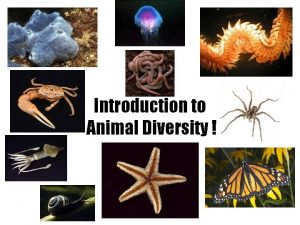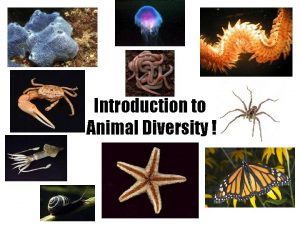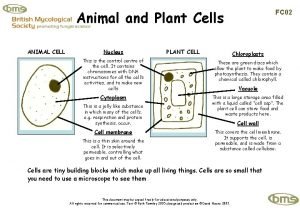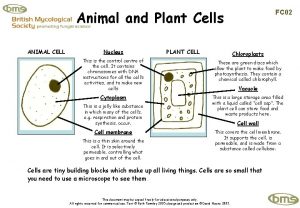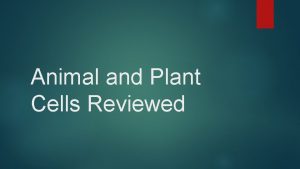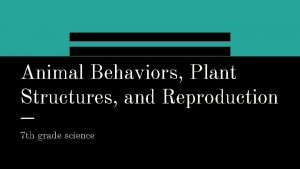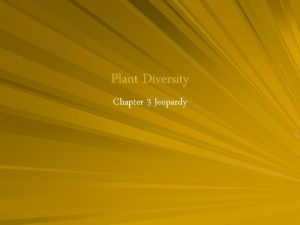Diversity of of Diversity Plant and Plant Animal














- Slides: 14

Diversity of of Diversity Plant and Plant Animal Life Animal

With an amazing diversity of more than 2 million kinds of organisms, there is a need for CLASSIFICATION.

Classification allows us to… • group living organisms systematically according to their common characteristics; • recognise relationships between different living organisms; and • have an easy reference in identifying living organisms.

Organisms are classified into FIVE KINGDOMS

Kingdom Animalia Invertebrates (with no backbone) • Without jointed legs • With jointed legs Vertebrates (with backbone) • • • Fish Reptiles Birds Amphibians Mammals

Invertebrates • Animals without jointed legs Sponges Stinging-cell animals Flatworms Roundworms • Large numbers of pores present on bodies • Sea animals with tentacles and stinging cells • Have flat, ribbonlike bodies • Parasites • Have long, cylindrical bodies with pointed ends • Many are parasites • • • E. g. tapeworms, liverflukes • E. g. pinworms, ascaris E. g. sponges E. g. jellyfish

Invertebrates • Animals without jointed legs Segmented worms Molluscs (shelled animals) Spiny-skinned animals • Bodies are divided into segments or parts • Found in a variety of environments • Soft bodies may be covered by a shell • Use muscular movement • Bodies are radially symmetrical with five-part body design • Found only in oceans • Move with tube feet • E. g. earthworms, leeches • • E. g. starfish, basket stars E. g. snails, octopuses

Invertebrates • ) Animals with jointed legs (Arthropods) With 3 pairs of legs (insects) With four pairs of legs (arachnids) With more than four pairs of legs • Bodies are divided into segments or parts • Bodies are covered with a exoskeleton (a hard substance that keeps the shape of the animals) • E. g. butterflies, beetles, termites, houseflies • E. g. spiders, scorpions, mites, ticks • E. g. millipedes, centipedes, prawns, crabs

Vertebrates Fish • • • Amphibians Cold-blooded Bodies are often covered by scales Breathe using gills Live in fresh water or sea water • • E. g. groupers, sea dragons, stingrays • • • Reptiles Cold-blooded Bodies are covered by moist skin with no scales Breathe through lungs Live partly on land in water • • E. g. toads, salamanders, frogs • • • Birds Cold-blooded Bodies are covered with dry skin, and covered with horny scales Breathe through lungs Live on land • • E. g. monitor lizards, crocodiles, tortoises • • Mammals Warm-blooded Have beaks and feathers Have wings but not all can fly Breathe through lungs Lay eggs with shells • • E. g. ducks, chickens, penguins • • • Warm-blooded Bodies are covered with hair Breathe through lungs Most give birth to live young E. g. human beings, cats, chimpanzees

Kingdom Plantae Flowering plants Non-flowering plants

Flowering plants • Have roots, stems and leaves • Reproduce by seeds • Produce seedbearing fruits

Non-flowering plants Mosses and liverworts Ferns Gymnosperms • Have no true roots, stems or leaves • Reproduce by spores • Spores are found in capsules • Have roots, stems and leaves • Reproduce by spores • Spores are found on the underside of leaves • Have roots, stems and leaves (needle-like) • Reproduce by seeds • Seeds are not found in fruits, by in cones • E. g. Red moss, Leucobryum glaoum, Diphyscium foliosum • E. g. Stag’s horn fern, Bird’s nest fern • E. g. pine, white spruce

Dichotomous Key • • • Classifies objects or organisms based on observable features Splits a group into two contrasting groups each time it branches out Can be used to identify organisms

Miscellaneous • http: //www. 101 science. com/Taxonomy. ht m • http: //www. nbrcnparks. org/ • http: //rmbr. nus. edu. sg/
 Tiburonia granrojo
Tiburonia granrojo Genetic diversity vs species diversity
Genetic diversity vs species diversity Ecosystem jigsaw activity
Ecosystem jigsaw activity Plant vs animal cells venn diagram
Plant vs animal cells venn diagram Similarities between animal rights and animal welfare
Similarities between animal rights and animal welfare Animal diversity chapter
Animal diversity chapter General features of animals
General features of animals Introduction to animal diversity
Introduction to animal diversity Animal and plant cell similarities
Animal and plant cell similarities Difference between plant cell and bacterial cell
Difference between plant cell and bacterial cell Venn diagram of plant and animal cell
Venn diagram of plant and animal cell Plant and animal cell foldable
Plant and animal cell foldable Venn diagram of plants and animals
Venn diagram of plants and animals Plant cell structure
Plant cell structure Function of vacuole
Function of vacuole
